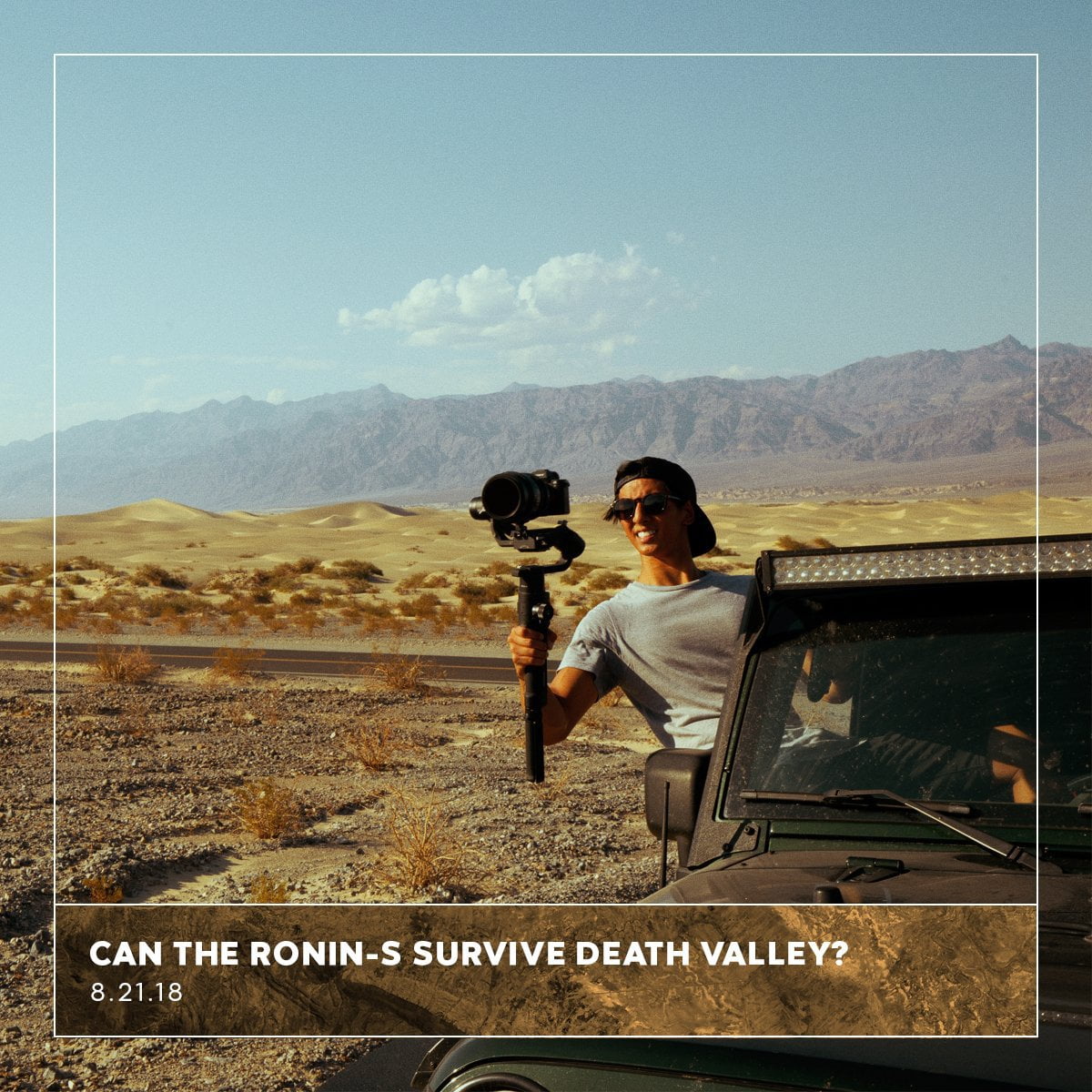Join us on location as we take the DJI Ronin-S into one of the most unforgiving deserts in the world..Death Valley.
Due to the popularity of this gimbal, we decided to put it through a series of tests in one of the hottest places on the planet so when shooting in less extreme situations you can be confident it will perform exceptionally well. Check out the video above to see how it held up to 117-degree weather, unreasonable payloads and 90+ mph wind tests.
Payload Test
DJI’s website says that the DJI Ronin-S can hold and operate with a payload of 3.6kg or roughly 7.9 lbs. While there are body and lens setups that could easily exceed the 7.9 lbs threshold, most SLR and Mirrorless bodies with a decently sized lens shouldn’t be an issue. Even when utilizing a large body like the EOS-1D X Mark II DSLR it leaves you with four and a half pounds to allocate to your lens and other accessories you may mount. In our testing, we utilized the Sony A7Sii which is about 1.3 lbs. and a Sigma Cinema Lens that weighed in about 5 lbs and a 2 lbs monitor. With 8.3 lbs. Ronin handled that weight without a sign of wavering so we decided to add a mic and audio recorder to intentionally have the Ronin be overloaded. Finally, at the unreasonable weight of the gimbal failed, meaning that the 7.9 lbs. limit has some wiggle room as we were able to operate it with an 8.3 lbs. payload.
Wind Speed Test
Another threshold that we looked to challenge was the operation speed limit that DJI states: 75 kph or about 46.5 mph. While out in Death Valley, the open desert allowed us to go beyond that 46.5 mph mark while filming out of a moving vehicle. We tested two different camera angles out of the car, first pointed toward the front of the car where we were headed as well as facing out of the passenger side window. Impressively, on both tests, the Ronin stayed operating at 90 mph but we began to see significant swaying issues at 70 mph which is impressive in itself. With that said, we saw the smoothest footage up to 65 mph. While it has an upper limit, it is great to see that we were able to get the shots we wanted at 60 mph which is well over the 46.5 mph DJI originally recommended as the top operational speed.
Heat Test
The most relevant and intriguing question we wanted an answer to was: Can the DJI Ronin-S operate in one of the hottest deserts in the world? The operating temperature range for this gimbal is -4 degrees to 113 degrees Fahrenheit. On the day we went to test this upper limit the thermostat clocked in at over 120 degrees on the open road. Coupling that with the heat from the ground and having the gimbal in the sun it was easy to tell this would be no easy task for any motorized gimbal to overcome. After a few minutes of operation in these conditions, the Ronin-S did shut off on us several times, which was on par with what we expected given the extreme situation. Because this test took place in a setting well over the upper limit, we would be interested to see how the Ronin-S operates over a long period of time closer to the 113-degree upper limit that DJI suggests.
Wrap Up
While these situations are not something that a videographer would run into when normally operating a gimbal we believe it is important to push the limits of your gear to see what it can handle. Each of these three tests proved that not only does the DJI Ronin-S live up to the specs it can even exceed them in some situations. It is safe to say that this will be our go-to gimbal as we continue producing videos.
Let us know what you would like to see us put to the test next in the comments below!




Share:
DJI Mavic 2 - What we know
10 Best Mavic 2 Accessories